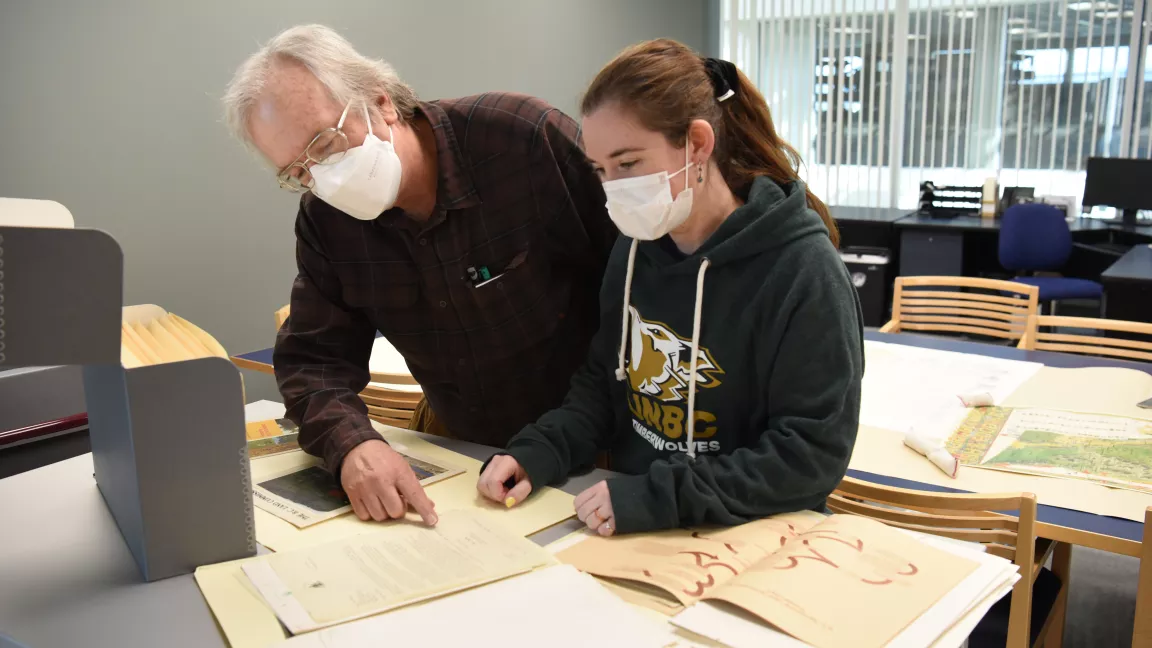Archival resources document history of Agricultural Land Reserve
After two years of archival processing, the G Gary Runka fonds are available to researchers at the Northern BC Archives and Special Collections. As the first general manager of the province's Land Commission, Runka played a pivotal role in developing the Agricultural Land Reserve

The passage of the Land Commission Act 50 years ago established protection for agricultural land across British Columbia. Now researchers can dig deeper into the history of land use planning in B.C., with the release of the G Gary Runka fonds at the Northern BC Archives and Special Collections.
Throughout his 60-year career, G. Gary Runka was involved in many of B.C.’s highest profile land use issues. However, he is perhaps best remembered for his leadership role in establishing B.C.’s landmark Agricultural Land Reserve (ALR) program in the early 1970s.
After two years of archival processing, Runka’s extensive work in the field of land use planning and natural resource management is now available to researchers. The release of the fonds is particularly timely in that April 18, 2023 marks the 50-year anniversary of the passage of the Land Commission Act, which enabled the establishment of this provincial zone to preserve B.C.’s scare amount of agricultural land.
UNBC Faculty of Environment Professor Dr. Paul Sanborn notes the importance of the availability of research access to the Gary Runka fonds is two-fold.
“There’s the historical angle of the history of public policy in relation to land, showing the government’s steps to undertake a new kind of planning initiative that no Canadian province had attempted to that point, and especially not at the pace that British Columbia aimed to do it,” Sanborn says. “There’s also the geographical angle; the records show decisions made that are reflected in the landscape we see today. Without the establishment of the ALR, British Columbia would look quite different, and some important agricultural areas would have been lost to urban development. Gary Runka played a very significant role in achieving that.”
In 1972, it was estimated that BC was losing 6,000 hectares of farmland a year to development. With only five per cent of B.C.’s land area with the soil and climate capability to grow food, on December 21, 1972, the government imposed a “land freeze” that halted further subdivision and non-farm use of farmland. This controversial move was followed by the passage of the Land Commission Act and the appointment of an independent Land Commission to oversee farmland protection in B.C.
As the Commission’s first General Manager, Runka, a soil scientist with the provincial Department of Agriculture at the time, was responsible for working with each Regional District in the province to establish its ALR boundaries. This culminated in approximately 47,000 square kilometres of agricultural land being protected from subdivision and development within a provincial zone.
Runka’s work to preserve agricultural land figures prominently in the G Gary Runka fonds, with the Agricultural Land Commission comprising its own series. He was also a frequent speaker on this topic and many of his early speeches have been preserved in this collection; they have also been digitized and made freely online.
At the time of its establishment, B.C.’s ALR program was considered the most progressive piece of planning legislation in North America and to this day, continues to remain a model looked to by many other jurisdictions that continue to lose their valuable agricultural land to non-farm development.
After serving as Chair of the Agricultural Land Commission from 1975 to 1979, Runka went on to establish his own consulting firm. Over the next 33 years, GG Runka Land Sense Ltd. served over 681 clients, including governments, universities, corporations, community groups, businesses and private individuals. However, Runka never wavered from his support for the ALR. At his untimely death in 2013, he was working in opposition to the Site C dam project due to the loss of over 5,000 hectares of high capability agricultural land.
All of this work is now available to researchers through Northern BC Archives and Special Collections, including documents and materials spanning three library bays, a massive photographic slide collection and more than 500 maps.
The Gary Runka research materials also included an extensive resource library representing a continuum of knowledge from geology and soils; through land classification and rural resource sectors, such as agriculture, wildlife and forestry. The library also contained extensive material on land use planning, with a focus on rural resource planning in B.C. While some of this library has been retained in Northern BC Archives and Special Collections, a significant amount has also been added to UNBC’s Geoffrey R. Weller Library for general access.
More information about the Gary Runka fonds, as well as selected digitized items, are available online.
To access the archival research material within the Gary Runka fonds, contact Northern BC Archives & Special Collections at archives@unbc.ca